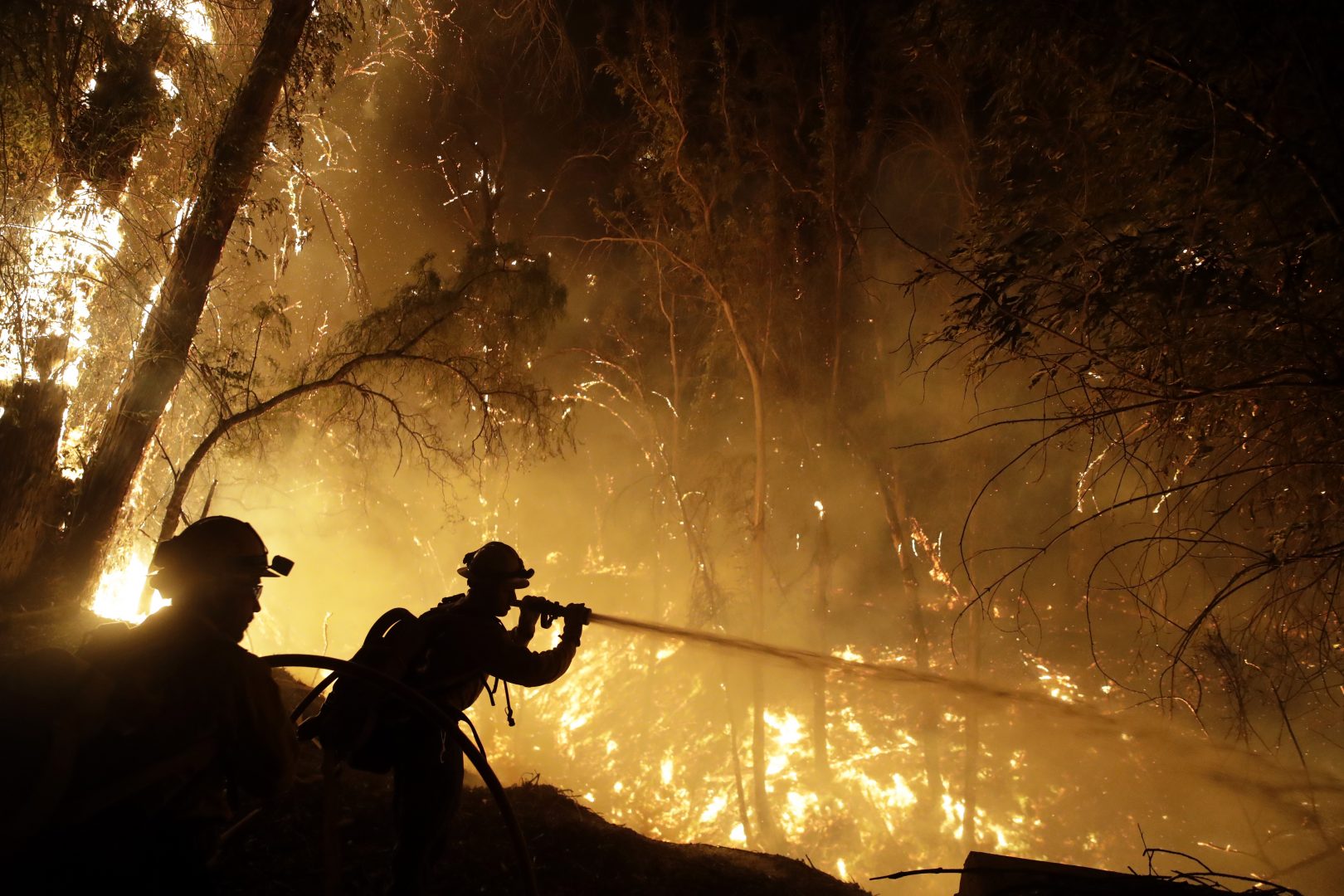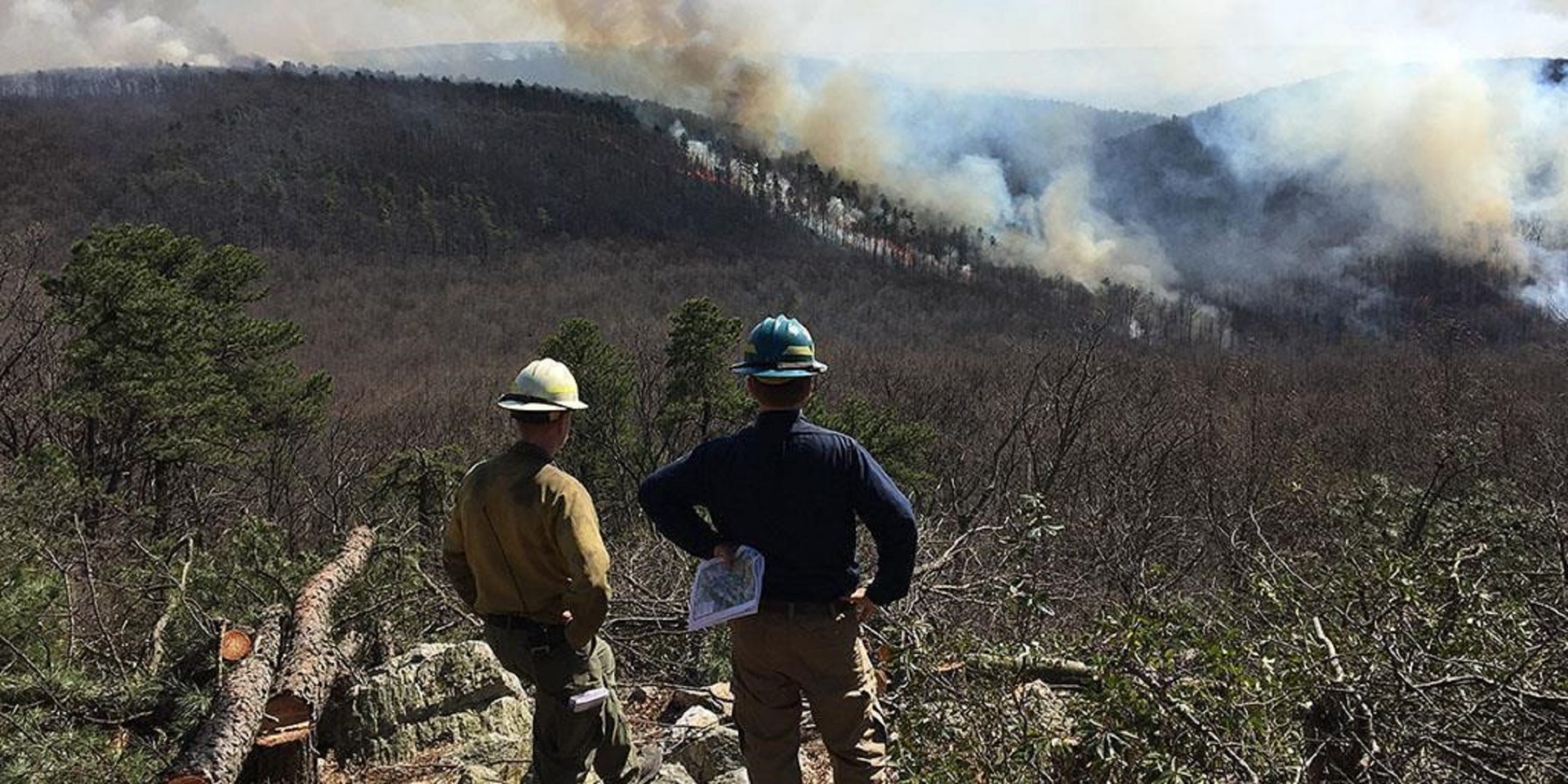
Firefighters battle the Maria Fire Friday, Nov. 1, 2019, in Somis, Calif. (AP Photo/Marcio Jose Sanchez)


Firefighters battle the Maria Fire Friday, Nov. 1, 2019, in Somis, Calif. (AP Photo/Marcio Jose Sanchez)

Firefighters battle the Maria Fire Friday, Nov. 1, 2019, in Somis, Calif. (AP Photo/Marcio Jose Sanchez)

Courtesy Department of Conservation and Natural Resources
This file photo shows a prescribed burn undertaken by the Department of Conservation and Natural Resources.
Warm temperatures and dry conditions are behind recent wildfires in the Northeast, but Pennsylvania foresters say weather trends should bring relief to the state.
So far this year, 671 fires have burned more than 1,900 acres in Pennsylvania, according to Cecile Stelter, Wildfire Public Information Officer with the Pennsylvania Department of Conservation and Natural Resources
DCNR said 100 wildfires were reported in the first week of November, with many more unreported. Several volunteer firefighters were injured bringing the flames under control. Two people have died this year due to fires.
The Ganner fire burned 138 acres on Neversink Mountain in Reading this month. An incident report from Nov. 15 shows the fire was 100% contained and cost $75,000 to suppress. A blaze on Blue Mountain in the Lehigh Valley burned 600 acres.
Wildfires, or brush fires, are more common in Pennsylvania in the spring. But Stelter said Pennsylvania has been setting a new record this fall.
“We have already had more wildfires this fall than we had in the spring and we have burned almost three times the amount of acres this fall than we had in the springtime of this year,” she said.
Places across the country have also been setting temperature records this fall, said Kaitlyn Trudeau, a Senior Research Associate for Climate Science with the nonprofit Climate Central.
“When you look at the average year-to-date minimum temperature in the Northeast, we’re seeing the record warmest that we’ve seen in over 100 years,” Trudeau said.
As temperatures stay high, Trudeau said, the atmosphere absorbs more moisture from plants and soil, creating conditions that allow fires to spread more easily and make them harder to put out.
Climate change, driven by pollution from burning fossil fuels, is increasing the likelihood of higher temperatures, and so also the risk of wildfires.
Trudeau said the Northeast has several risk factors for increased wildfires. Those include climate change and a high concentration of homes built up against woods. That boundary zone between homes and nature is where many fires start.
Prescribed burns, or intentional fires set to clear brush from forests, are an important tool for lowering the risk of wildfires growing to dangerous proportions. But, Trudeau said, it’s getting more difficult to use that tool because hot, dry conditions are more common.
“It’s going to be harder and harder to use the tools that we’ve used historically to prepare now,” she said.
Stelter said Pennsylvania has been seeing moderate to severe drought conditions. But, she said, relative humidity is starting to go up and temperatures are starting to fall. That’s helping potential wildfire fuel absorb more moisture and be less likely to ignite.
“All of those indicators are trending in the right direction. But we’re probably still going to have the threat of wildfires until we get several days of significant soaking precipitation in all parts of the state,” Stelter said.
DCNR said 99% of wildfires in the state are caused by people, often through burning trash or yard debris.
Much of Central Pa. is under a drought watch or drought warning. Burn bans are in effect in Berks, Franklin, Juniata, Lebanon ,Northumberland, and York counties. Open burning is defined as the ignition and subsequent burning of material outdoors, either in a burn barrel or on the ground.
The use of propane or gas stoves, charcoal grills, or the use of tobacco is not covered under county burn bans. Campfires are allowed in fire rings in designated campgrounds.
Even without a burn ban, Stelter said it’s important to be careful when burning debris. People should burn in an area cleared of flammable material, away from tree lines. They should avoid burning on windy days and never step away from the fire once it is lit.
Stelter said it’s also important to make sure that, once finished, a fire is completely extinguished with water. Embers can stay warm for days and can reignite if not fully extinguished.
People can learn more about the risks to their homes at wildfirerisk.org. The National Fire Protection Association recommends preparing a home for wildfire by reducing vegetation around the home, removing debris such as dead leaves and using fire-resistant siding and roof shingles. More tips can be found on their website.
StateImpact Pennsylvania is a collaboration among WITF, WHYY, and the Allegheny Front. Reporters Reid Frazier, Rachel McDevitt and Susan Phillips cover the commonwealth’s energy economy. Read their reports on this site, and hear them on public radio stations across Pennsylvania.
(listed by story count)
StateImpact Pennsylvania is a collaboration among WITF, WHYY, and the Allegheny Front. Reporters Reid Frazier, Rachel McDevitt and Susan Phillips cover the commonwealth’s energy economy. Read their reports on this site, and hear them on public radio stations across Pennsylvania.
Climate Solutions, a collaboration of news organizations, educational institutions and a theater company, uses engagement, education and storytelling to help central Pennsylvanians toward climate change literacy, resilience and adaptation. Our work will amplify how people are finding solutions to the challenges presented by a warming world.